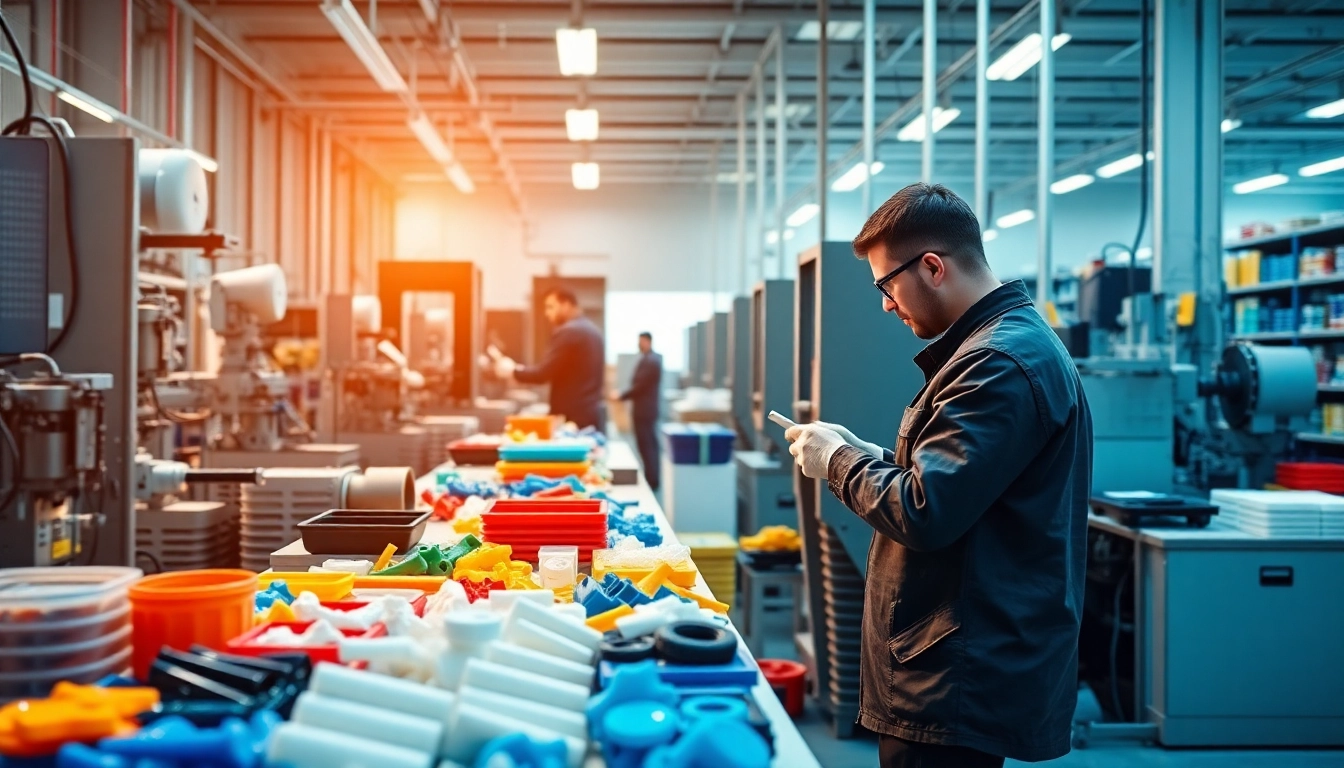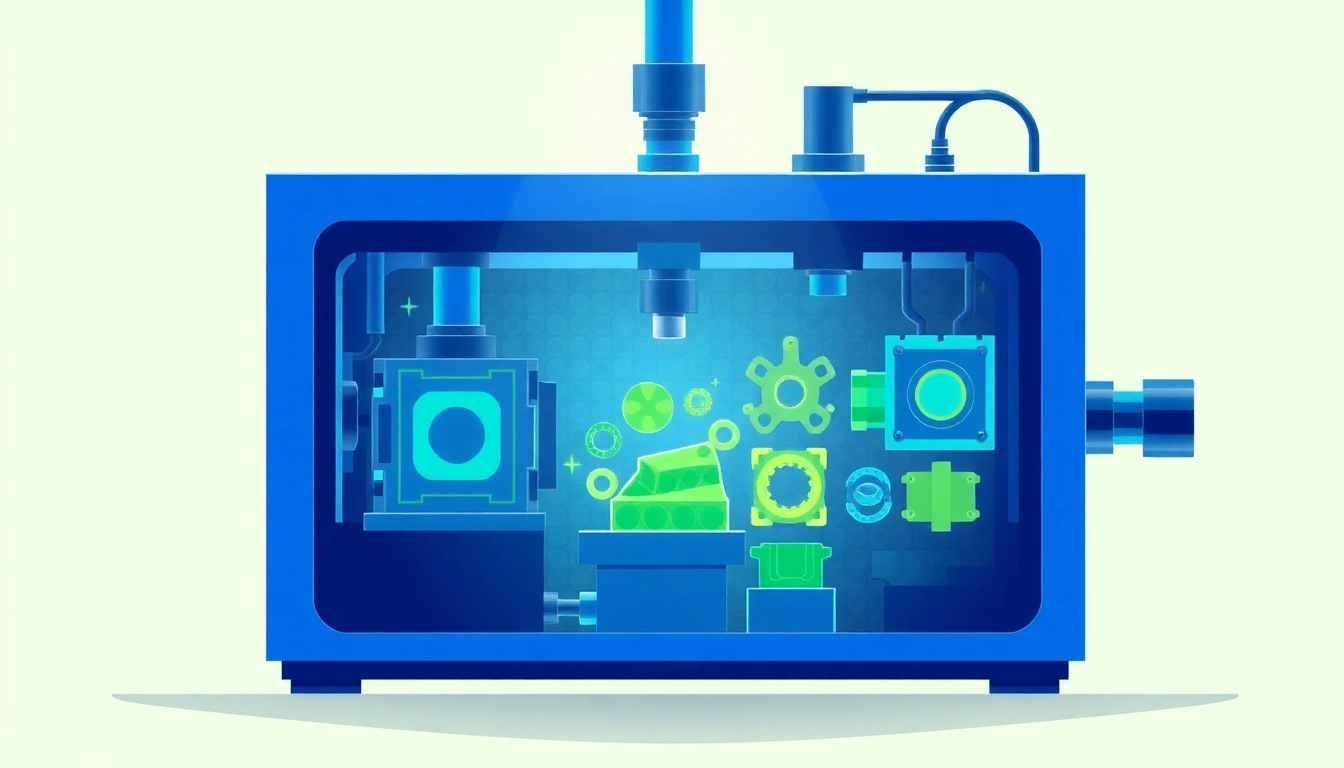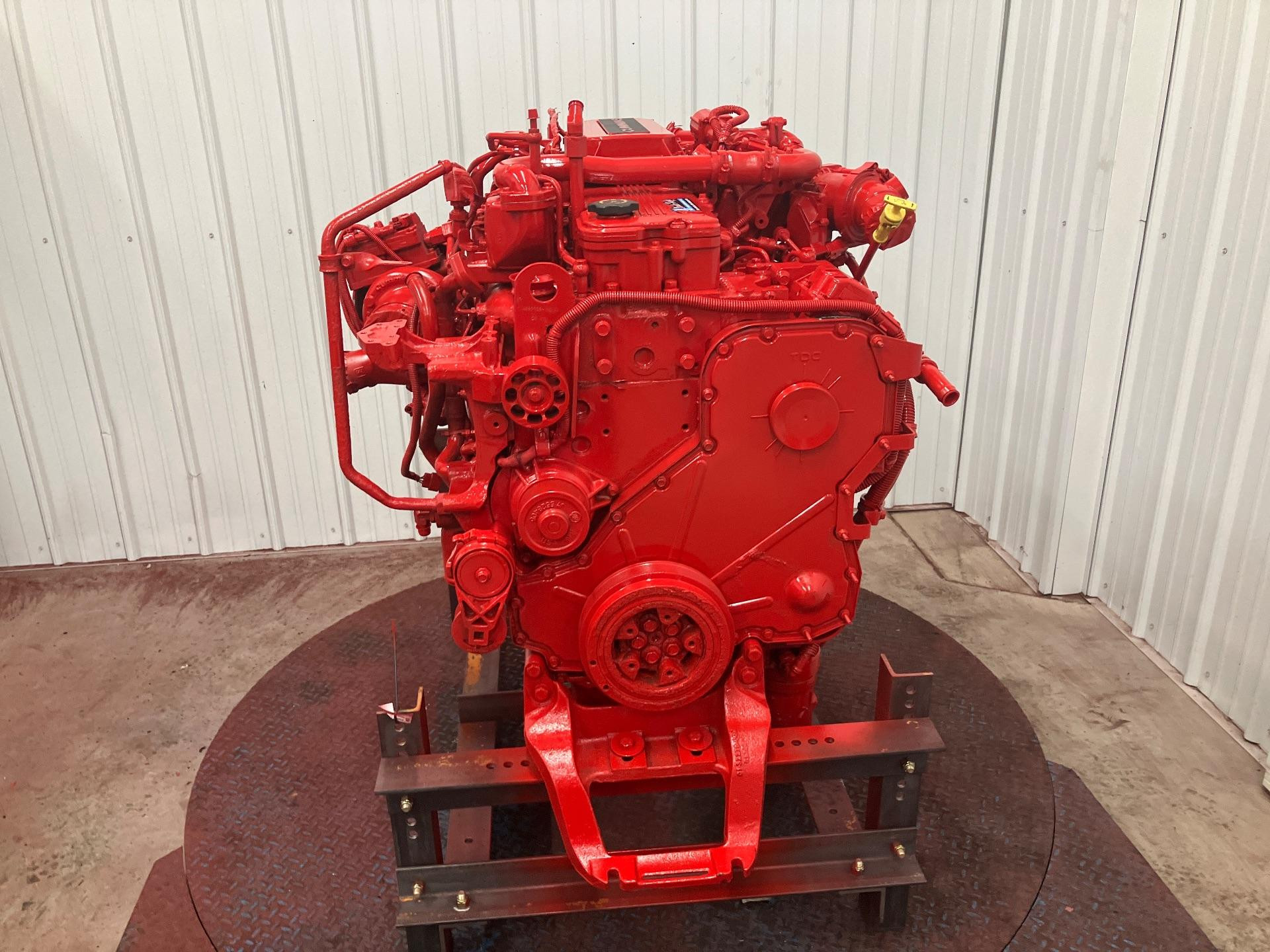Understanding the Manufacture of Plastic Parts
The manufacture of plastic parts involves various intricate processes, materials, and techniques that are essential for creating high-quality products tailored to meet industry demands. With advancements in technology and a growing emphasis on sustainability, understanding these processes is critical for both manufacturers and consumers alike. In this comprehensive guide, we will explore the various manufacturing techniques, the importance of quality in production, common materials used, key processes involved, factors influencing choices, best practices to enhance efficiency, and future trends in the industry.
Overview of Plastic Manufacturing Techniques
Plastic manufacturing encompasses a range of techniques suitable for different applications. Some of the most common methods include:
- Plastic Extrusion: In this method, plastic pellets are melted and then forced through a die to form continuous shapes such as pipes, sheets, or films.
- Injection Molding: A widely used technique that injects molten plastic into a predefined mold to create specific shapes. This method is often favored for its efficiency and repeatability.
- Rotational Molding: Involving the heating of a hollow mold that rotates around two axes, allowing for the uniform coating of the mold’s interior with melted plastic, ideal for large and hollow objects.
- Vacuum Forming: A process where a thermoplastic sheet is heated until pliable and then draped over a mold while a vacuum pulls it down into shape.
- Thermoforming: Similar to vacuum forming, it involves heating a plastic sheet and forming it over a mold but can also utilize pressure.
- Compression Molding: This technique uses heat and pressure to shape plastic in an open mold. It’s beneficial for producing larger parts quickly.
- 3D Printing: An additive manufacturing technique that creates parts layer by layer from computer-aided designs, providing flexibility for complex shapes.
Importance of Manufacturing Quality
Maintaining high quality throughout the manufacturing process is vital to ensure that the end products meet both customer expectations and regulatory standards. Quality control measures include defining specifications, regular testing, and process audits. Implementing a robust quality management system can help manufacturers reduce defects, enhance customer satisfaction, and lower production costs in the long run. Techniques such as Six Sigma and Lean Manufacturing are frequently applied to streamline production and ensure consistent quality.
Common Plastic Materials Used
The choice of material plays a significant role in the performance of the final product. Common materials include:
- Polyethylene (PE): Known for its excellent chemical resistance and low cost, it’s used in various applications, from packaging to automotive parts.
- Polypropylene (PP): Durable and versatile, often used in automotive components, textiles, and consumer products.
- Polystyrene (PS): Frequently used in packaging, it’s lightweight and easy to mold, making it ideal for disposable items.
- Polyvinyl Chloride (PVC): This versatile plastic is used in construction and plumbing for pipes and fittings.
- Thermoplastic Elastomers (TPE): Combining the properties of rubber and plastomers, ideal for applications requiring flexibility and elasticity.
- Acrylic (PMMA): Known for its clarity and weather resistance, used in optical applications and signage.
Key Processes in Plastic Part Manufacturing
Injection Molding and Its Benefits
Injection molding is one of the most popular manufacturing methods for plastic parts. It involves injecting molten plastic materials into a mold under high pressure. This process offers several benefits:
- High Efficiency: Once a mold is created, the process allows for the rapid production of many identical parts, making it ideal for mass production.
- Design Flexibility: Complex geometries and intricate designs can be achieved, allowing manufacturers to innovate continuously.
- Material Versatility: A wide range of thermoplastics and thermosetting polymers can be used, enabling manufacturers to customize products for specific needs.
- Reduced Waste: The precision of the injection mold minimizes material wastage, aligning with sustainability goals.
Other Manufacturing Methods Explained
Besides injection molding, several other manufacturing methods are noteworthy:
- Extrusion: Ideal for producing long continuous shapes, it’s commonly used in pipelines and tubing.
- Rotational Molding: Best suited for large, hollow objects, like tanks and toys. Its method allows for thicker walls and even material distribution.
- Vacuum and Thermoforming: Great for packaging companies needing to create cases or trays that hold items securely.
- 3D Printing: Emerging as a favorite for prototyping and low-volume production, allowing for fast iterations and customized products.
Choosing the Right Process for Your Needs
Selecting the correct manufacturing process is crucial and depends on numerous factors, including:
- Desired product specifications (size, shape, complexity)
- Production volume (low vs. high quantity)
- Material considerations (compatibility and properties)
- Budget constraints (initial investment vs. operational costs)
Engaging with experienced manufacturers can provide insights into the best practices for selecting the right processing method tailored to specific project needs.
Factors Influencing the Choice of Manufacturing Process
Cost Considerations in Plastic Manufacturing
Cost is a primary consideration when selecting a manufacturing process. It encompasses:
- Initial setup or tooling costs (especially in injection molding where mold creation is expensive)
- Material costs, which can vary significantly between different types of plastics
- Operational costs, including labor, utilities, and maintenance of machines
- Long-term costs related to waste and inefficiency brought about by the selected process
A thorough cost analysis must be conducted to ensure profitability, especially when launching new products into the market.
Production Volume and Complexity
The expected production volume directly influences the choice of manufacturing process. For instance:
- Low Volume: Techniques like 3D printing or small-scale injection molding suited for prototyping or custom parts are more economical.
- High Volume: Processes such as traditional injection molding are cost-effective at high volumes, as the initial investment can be amortized over larger quantities.
- Complex Parts: Consideration must be given to which manufacturing method can accommodate intricate designs without compromising quality.
Material Compatibility Concerns
Material choice can significantly impact the manufacturing process. Compatibility between the selected manufacturing technique and the plastic material is vital to ensure high-quality output. For example, some materials may require heating to specific temperatures before they can be processed, while others may not be suited for certain methods, such as injection molding, due to their rigidity or melting points.
Best Practices to Enhance Manufacturing Efficiency
Integrating Technology in Production
Using modern technology can drastically enhance efficiency. Implementation might include:
- Automation: Automating repetitive tasks reduces labor costs and human error.
- Real-Time Monitoring: Utilizing IoT devices can predict machine failures and schedule maintenance proactively.
- Advanced Software: CAD (Computer-Aided Design) and CAM (Computer-Aided Manufacturing) software streamline the design and production process.
Investing in the latest technology not only improves production quality but also speeds up the development cycle, giving businesses a competitive edge.
Quality Control Measures to Implement
Quality control is essential in the manufacture of plastic parts. Firms should consider:
- Regular Inspections: Routine checks during production ensure that any defects are caught early.
- Material Testing: Testing raw materials before usage ensures compatibility and quality standards are met.
- Employee Training: Providing ongoing training for employees to keep them informed about quality standards and techniques.
Creating a culture of quality excellence within the organization will foster better production outcomes.
Streamlining Operations for Better Output
Manufacturers should continually look for ways to improve operational efficiency through:
- Lean Manufacturing Principles: Eliminating waste and optimizing processes improve overall performance.
- Collaborative Workflows: Encouraging communication between different departments can enhance problem-solving and resource allocation.
- Flexible Manufacturing Systems: Establishing adaptable production systems can allow for quick adjustments based on market demands.
Future Trends in Plastic Part Manufacturing
Sustainability in Plastic Manufacturing
The industry is witnessing a strong shift towards sustainability. Manufacturers are focusing on:
- Biodegradable Plastics: Research and innovation in creating materials that break down more naturally over time.
- Recycling Initiatives: Designing products with end-of-life considerations that promote recycling and repurposing of materials.
- Energy Efficiency: Implementing processes that reduce energy consumption reduces overall carbon footprints and operational costs.
With consumers demanding eco-friendly products, manufacturers are adapting to meet these expectations while also maintaining profitability.
Innovation through Advanced Techniques
Innovation plays a crucial role in the future of plastic part manufacturing. Techniques such as:
- Smart Manufacturing: Using artificial intelligence and machine learning to optimize manufacturing processes and predict consumer trends.
- Hybrid Manufacturing: Combining traditional techniques, such as injection molding, with additive manufacturing (3D printing) to produce complex geometries efficiently.
- Advanced Material Science: Ongoing research into new materials that enhance mechanical properties and expand the use cases for plastics in various industries.
Market Trends Impacting the Industry
Market dynamics continually reshape the manufacturing landscape. Current trends include:
- Shifts in Consumer Preferences: The demand for custom, personalized products drives manufacturers to adopt agile production methods.
- Global Supply Chain Changes: The COVID-19 pandemic has prompted businesses to evaluate their supply chain models, encouraging local sourcing and reducing dependency on global suppliers.
- Technological Adoption: As automation and Industry 4.0 concepts gain traction, manufacturers must keep pace with technological advancements to remain competitive.
Understanding these trends allows manufacturers to proactively adjust their strategies and embrace innovation.



